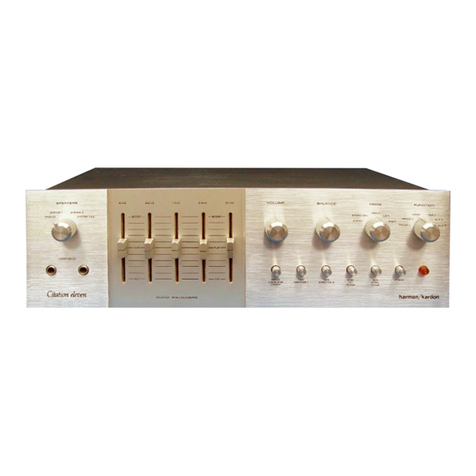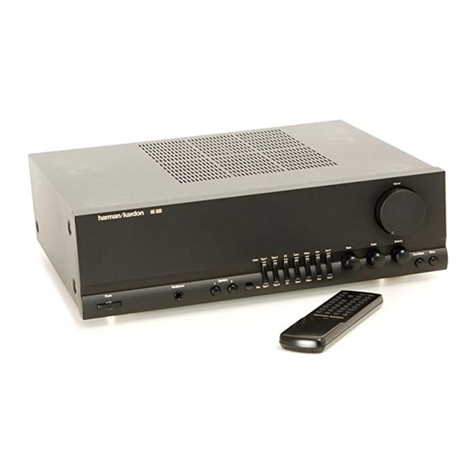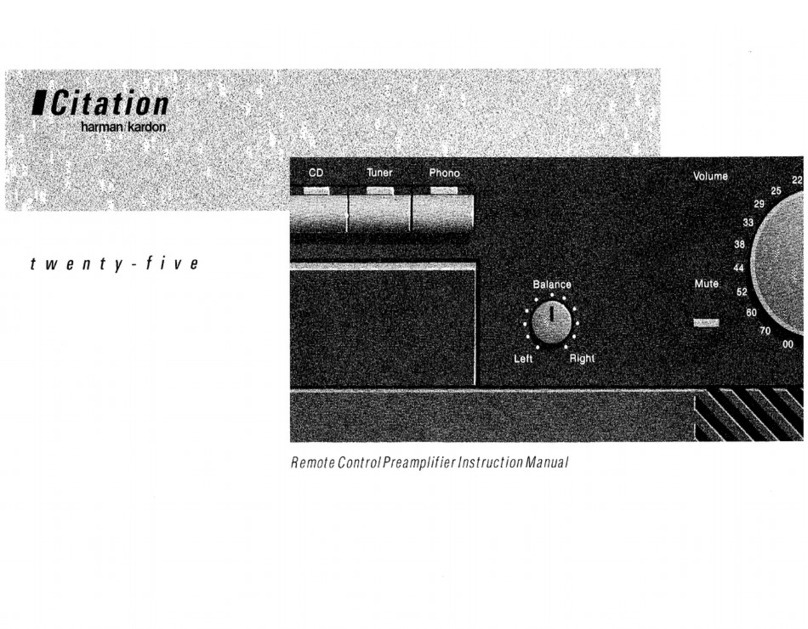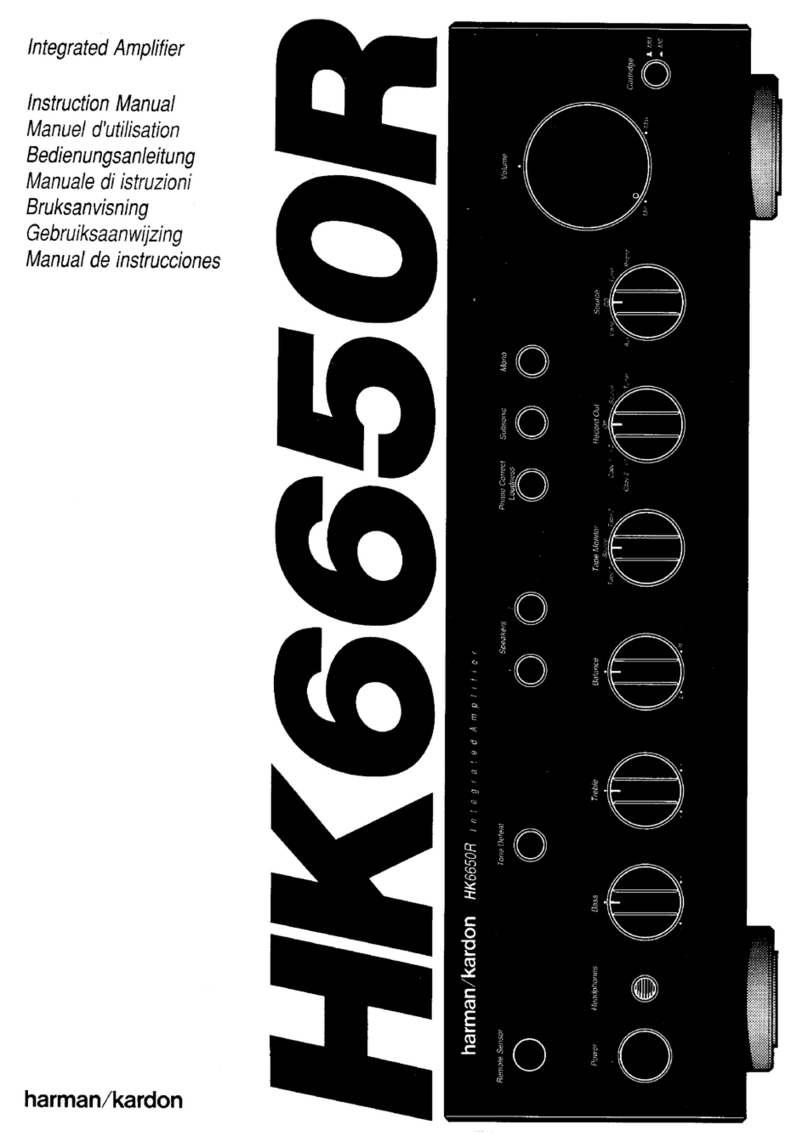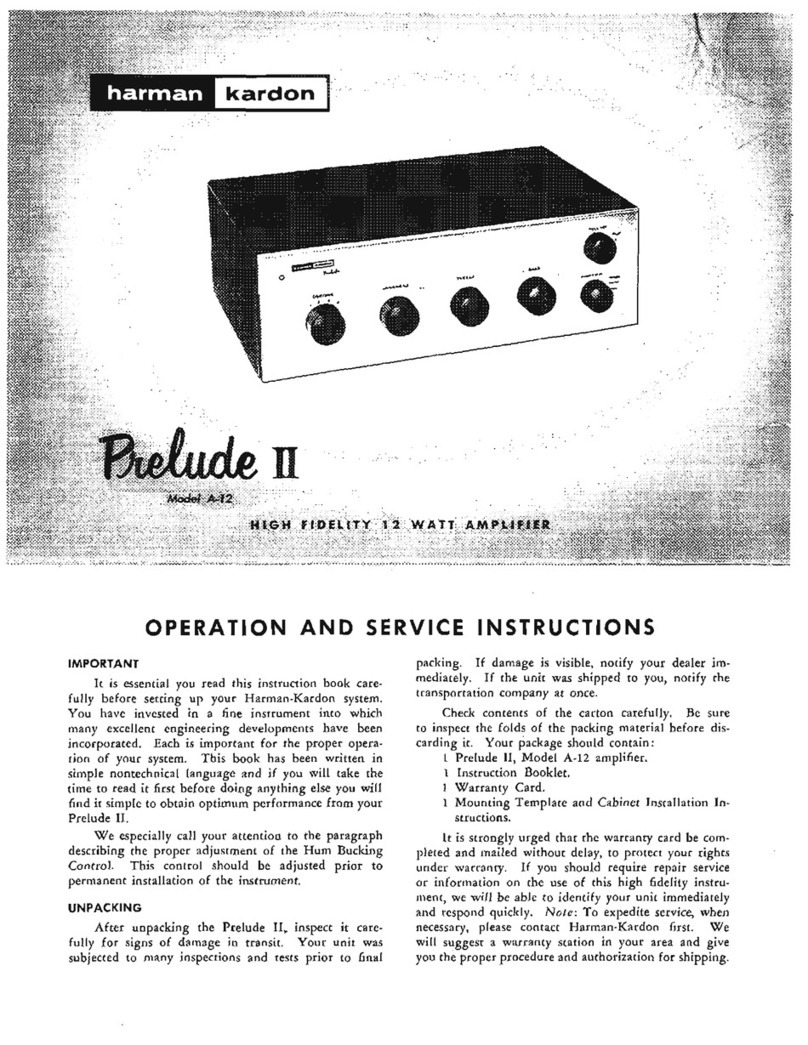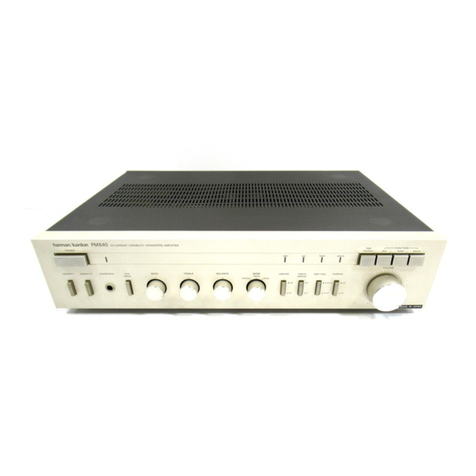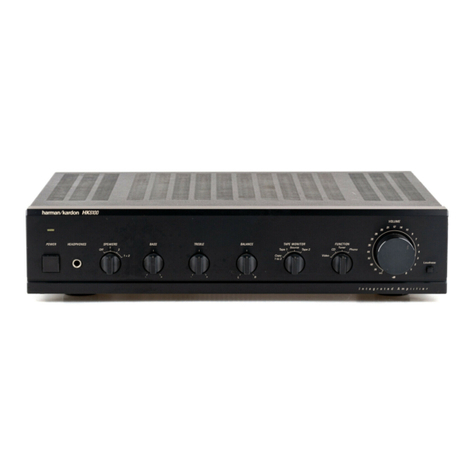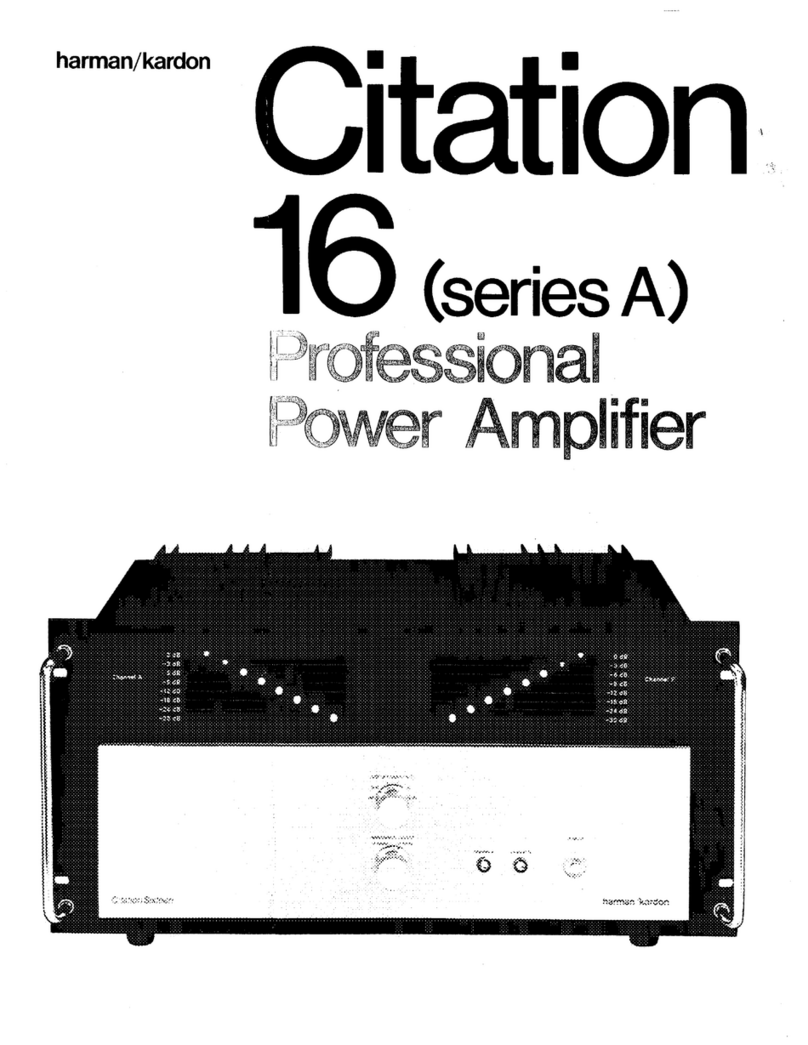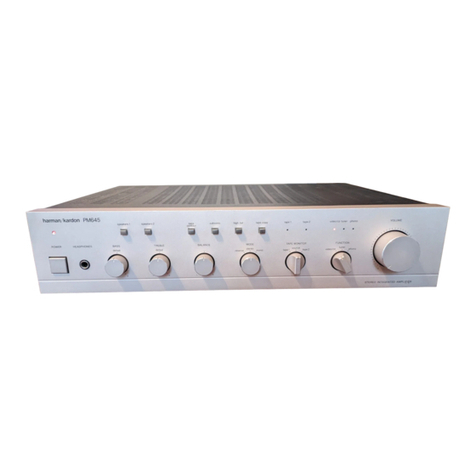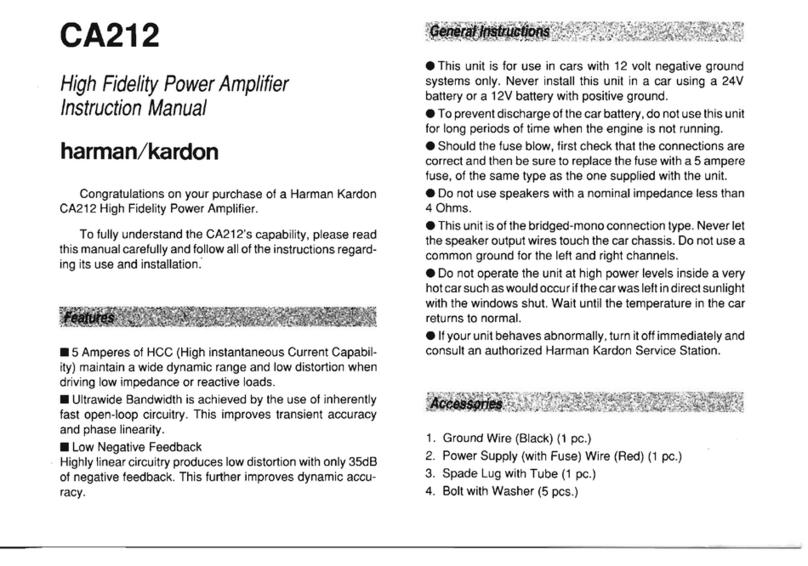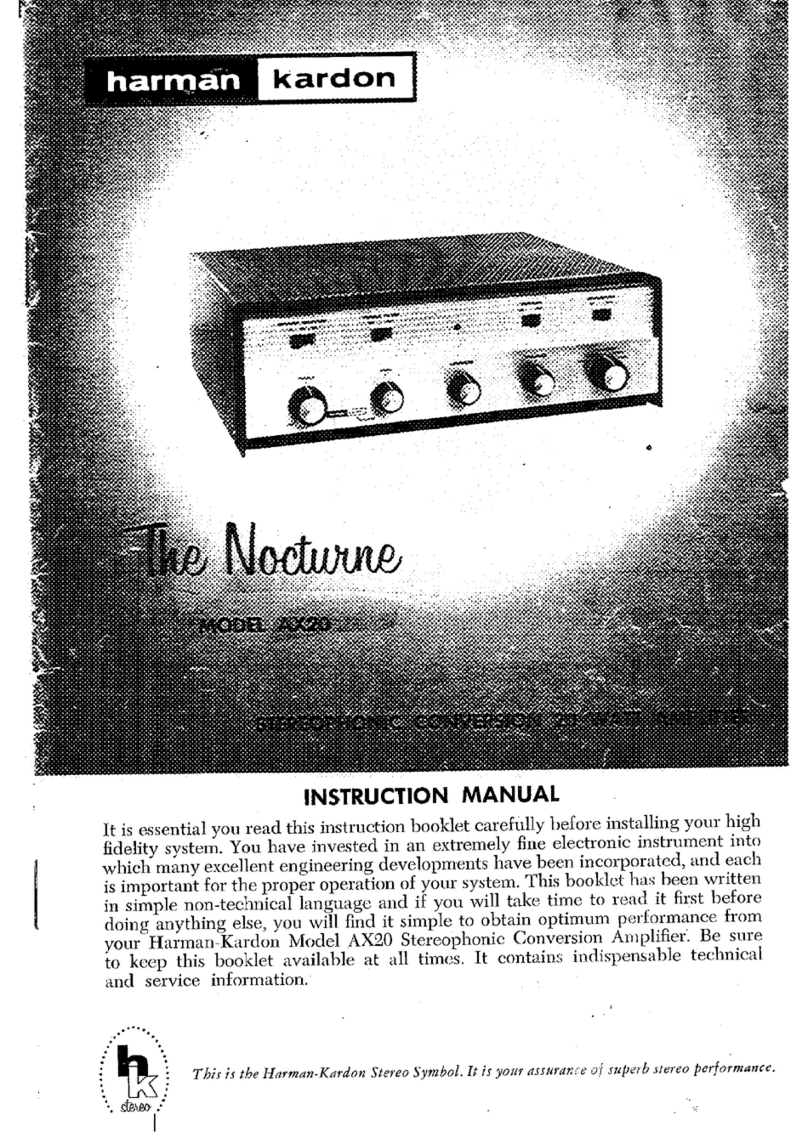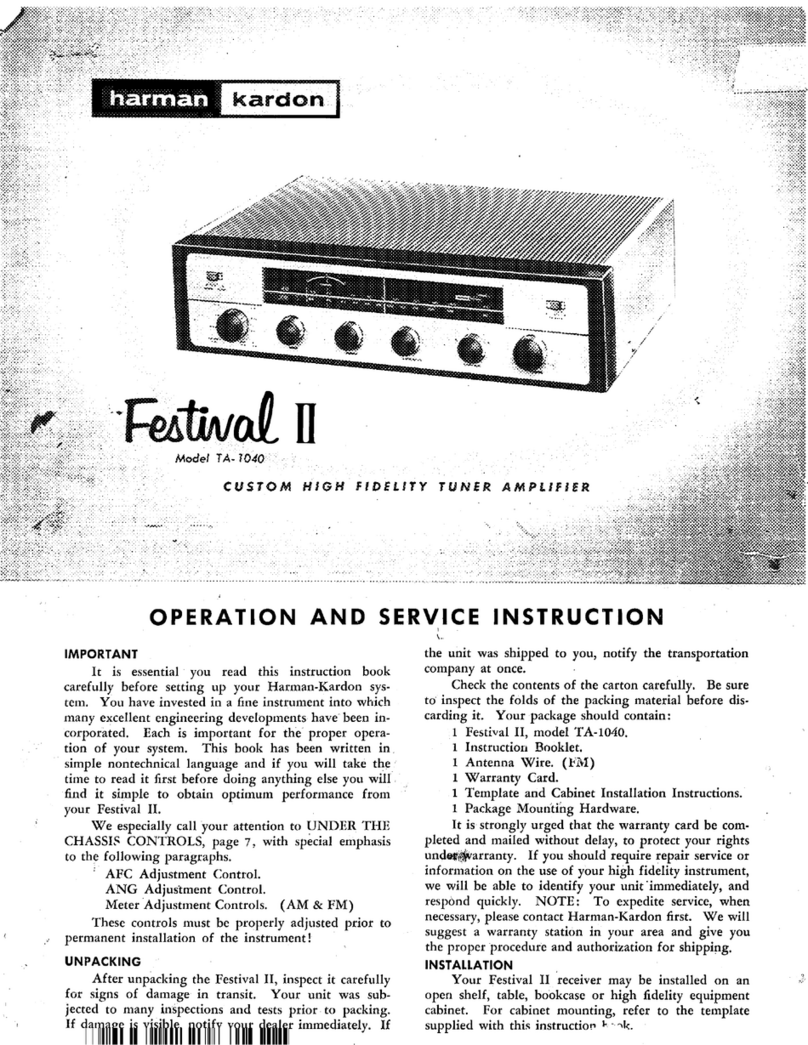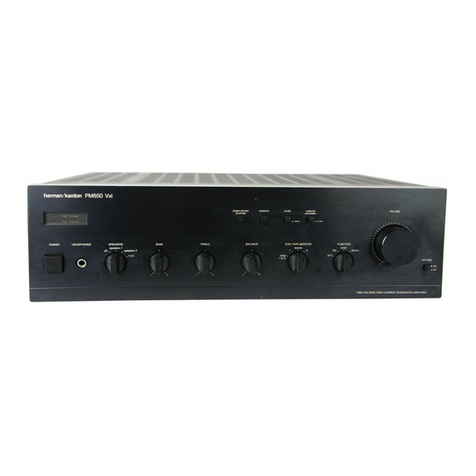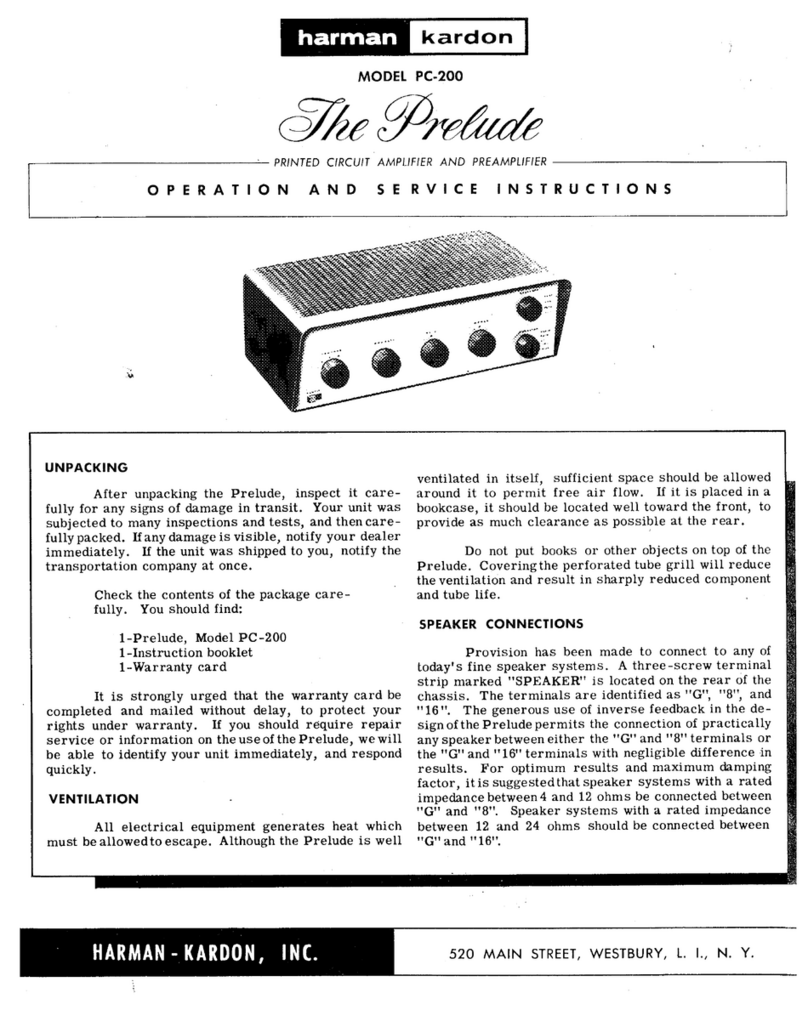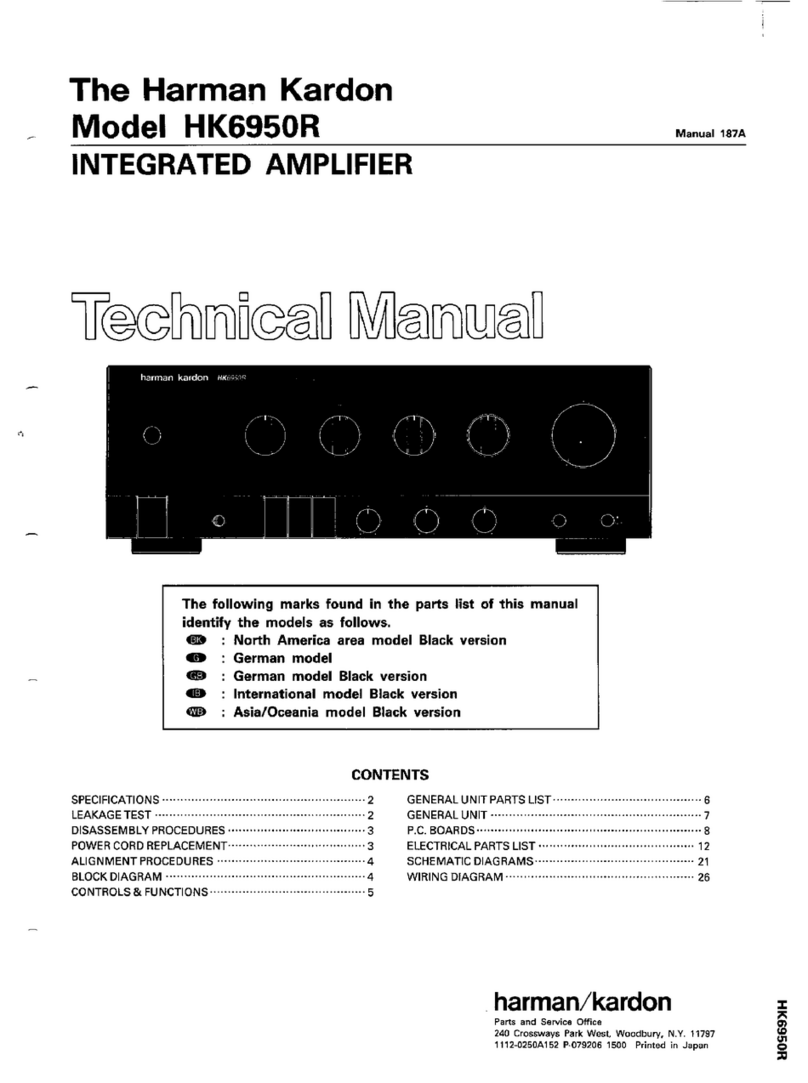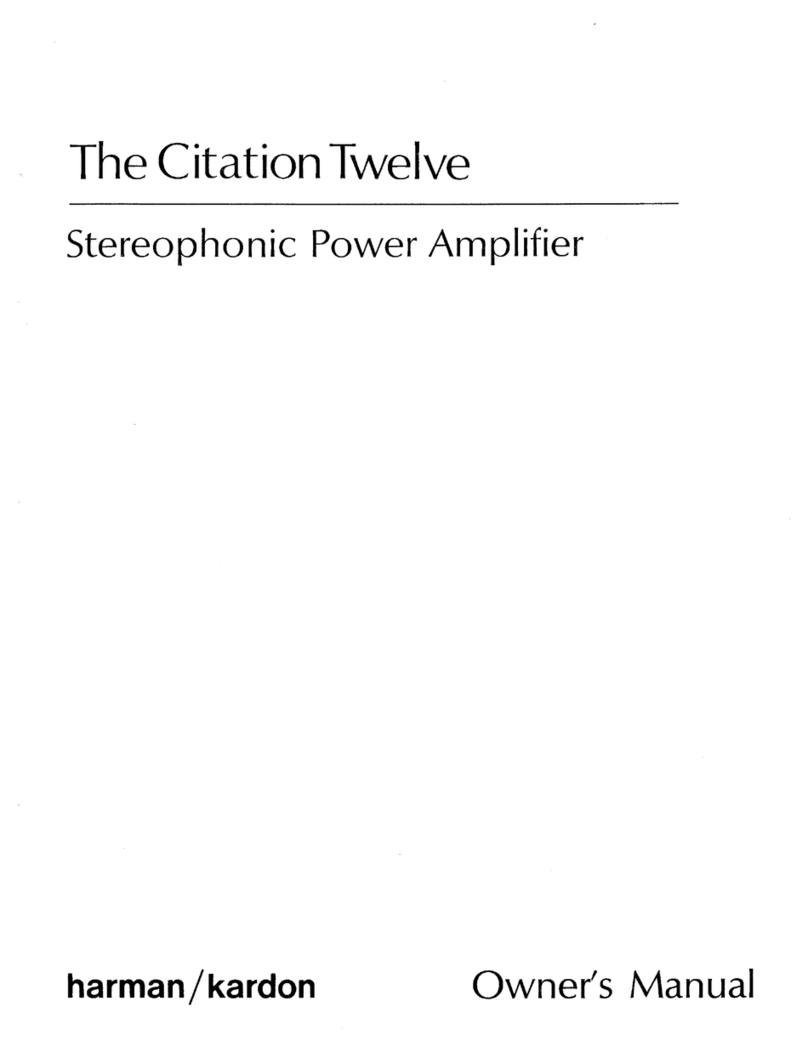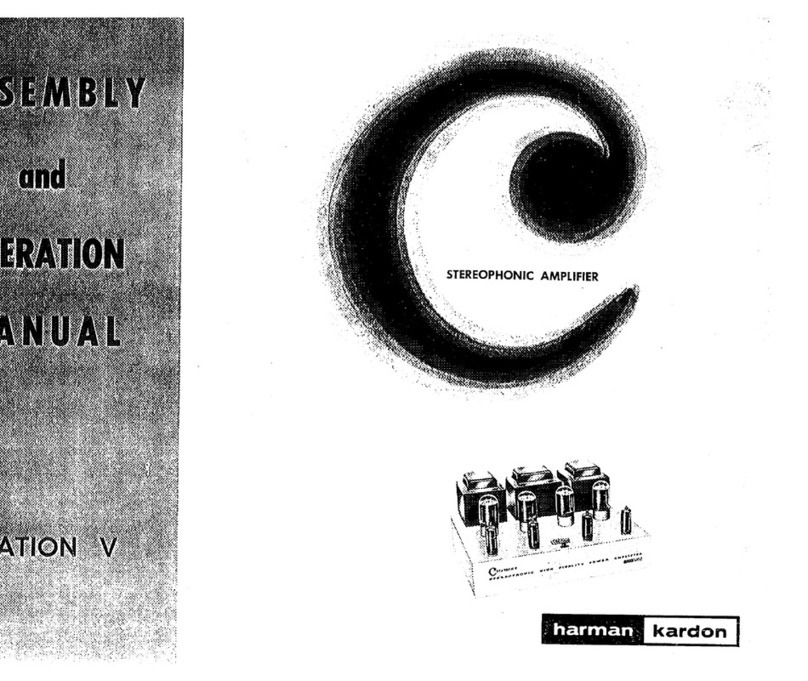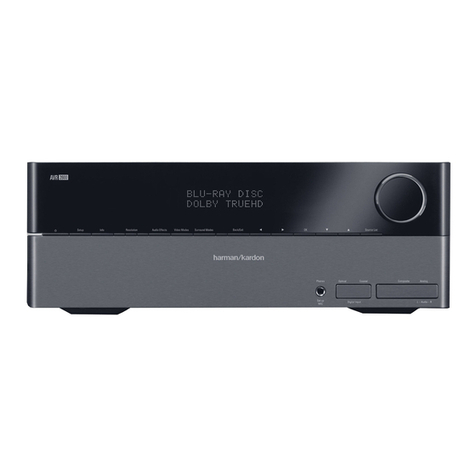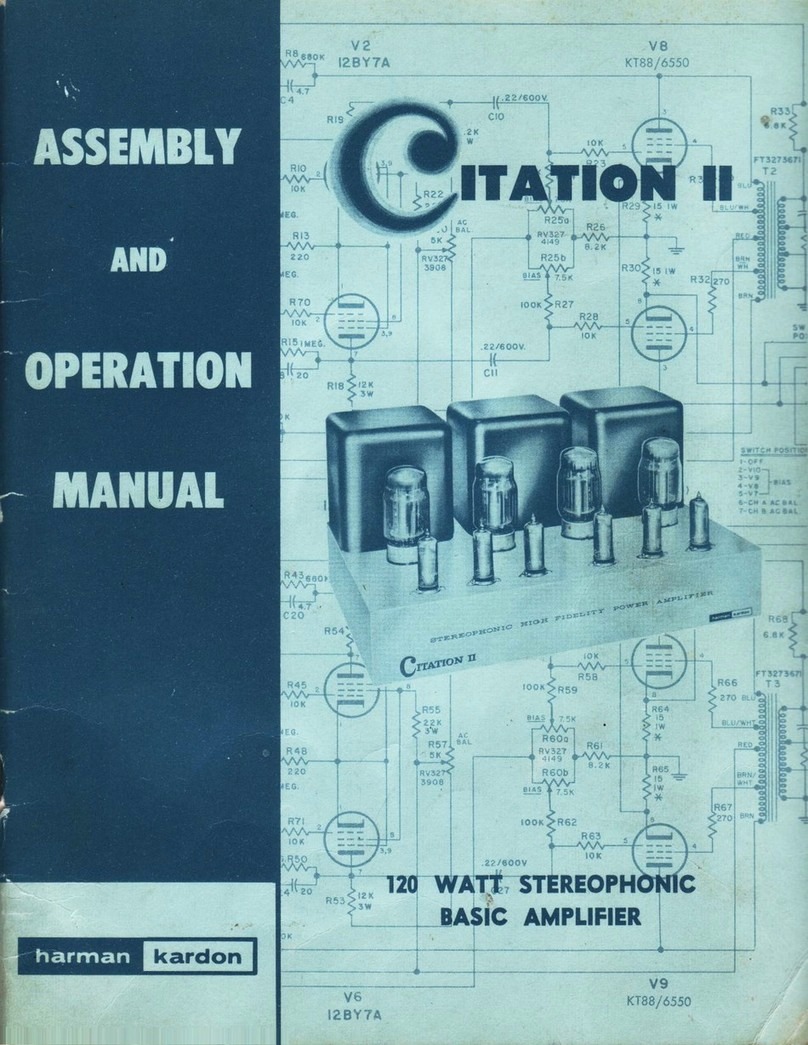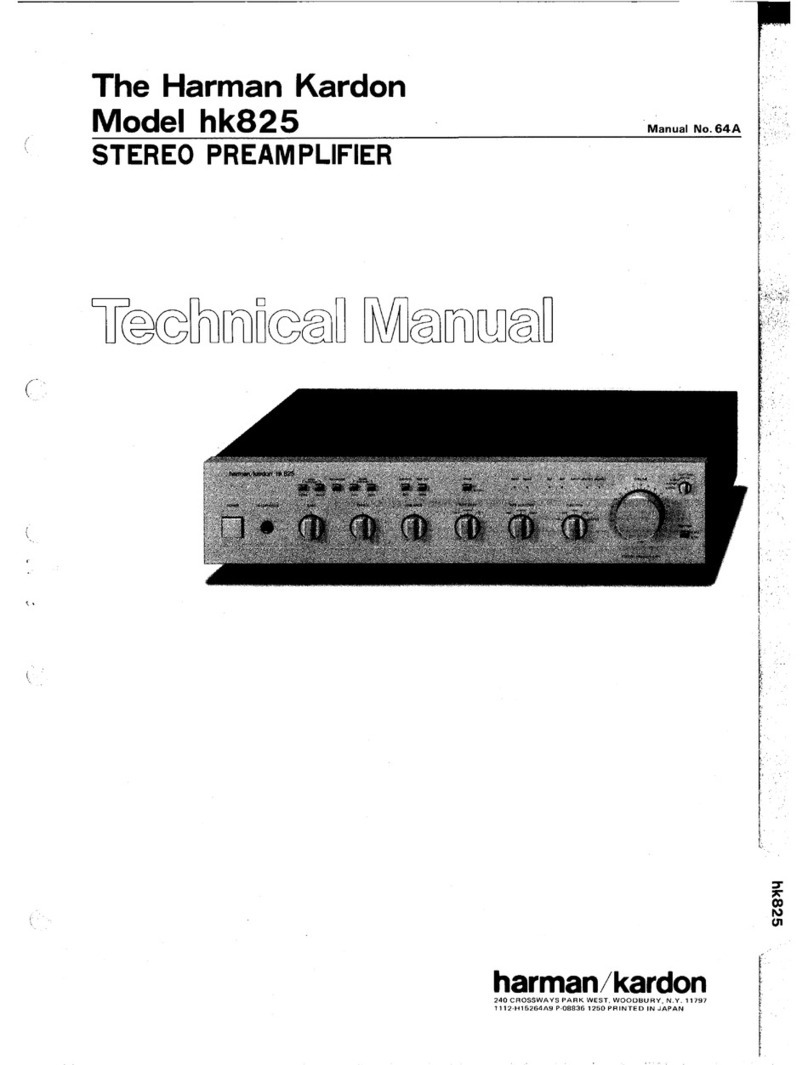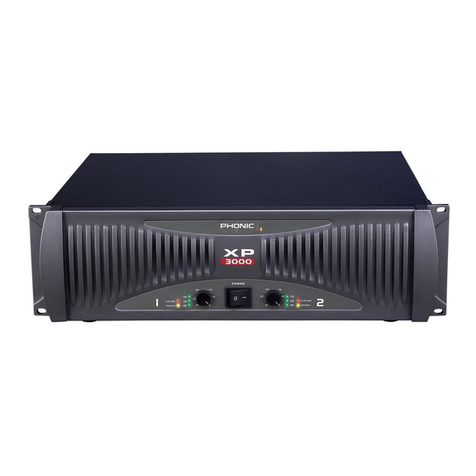Bias selection switches
This unitenables bias selection in
3
stages (low, normal and high). The bias settings
allow the effective use of the heat stnk thermal capatity by adjusting the idle
current to the operating conditions. Generally select the normal bias position.
,
low position
The low bias position reduces the bias but is the optimunl setting for continuous
use at high,power levels. The low bias position is also optimal for use at a high
roomtemperatureand/or a poor heat radiation environment.
normal position
The normal bias position is recommended for normal use irrespectiveof the music
genre, big band orchestra, popular or jazz. The heat generatedis alittle more than
that inthe low bias position.
high position
The high bias position is suitable when delicate reproduction is required such as
when listening to baroque music. The heat generation is the highest and the heat
sink temperature rises up to about 50°C. Use at this position should be avoided
when the room temperature is high or heat radiationenvironment is poor. When it
is desired to expedite warmtng up after power on, the amplifier is warmed in a
short time by selectingthis position.
DO
not Operate continuously at high volume levelsat rhe high bmr poritmn
for
a
long Inme.
A
high temperature pror~ctotmay
be
activated when the charrlr temperature reacher
about
65'C.
Thermal protector
When the heat sink tempereture exceeds 65OC. a thermal protector is operated to
pr~te~t'thepower transistors. The red "safety" indicator illuminates and the ope.
ration stops. Ifthis occurs, turn the power offtemporarily. After cooling the unit
awhile, place the bias selection switch in the low or normal bias position, turn on
the power and continue touse the unit.
IUW
normal htgh
IBlAS
1
Operating procedure
Beforeturning the power on, be sure to check that all connections are correct.
1. Turn the volume control knobof
your preamplifier to the minimum level.
2. Select the desiredsource.
3.
Turn on the preamplifier power.
4. Press the nornlal bias switch. Press the high bias switch when it is desired to
expedite warming up of the amplifier.
5. Turn on the power switch. The red "wait" indicator illumtnates. In about 7
seconds, the "wait" indicator goes off,the green "on" and "Citation
XX"
indi-
cators illuminate and the amplifier is ready for operation.
6. Start the source (tapedeck, turntable, etc.).
(iradually increase the preamplifier volunle and sound will be heard from the
speakers.
7.
If the "lnfrasonic interference" or "ultrasonic interference" indicators tllumi-
nate during operation, press the corresponding filter switch. (See Inltasonic
and Ultrasonic filter explanations.)
8. When turning off the system power at the end of operation, first turn off the
power of this unit and then turn off the power of other system compone]its.
Turning off the preamplifier power first may cause generation of a turn-off
transient which will be amplified by this unit and may damage the speakers.
Protection circuit
-
a
The "wait" indicator illuminates for about
7
secondsafter the power is turned on,
and no sound will be heard fromthe speakersduring this period. The protecriort
circuit mutes the unit until it stabilizes. This prevents noise and turn-ontran-
sients from damagingthe speaker systems.
a
The protection circuit also mutes the speaker output when the speaker terminals
are shorted during operation. Although the protection circutt resets automati-
cally, turn offthe power temporarily and remove the short circuit.
a
In case of abnormal heat generation, refer to the explanation of blas selectton
switches.
The design and specifications are subject to change for improvement wtthout
notice.
Specifications
Output
Input sensitivity
Filter
Infrasonic
Ultrasonic
Power source
Power consumption
Dimensions
Weiqht
8Rload 250W x
2
4S2 load 440W x 2
IVIlSkR
1Hz (6dB/octl
lOOkHz (Secondarybessel filter)
ACllOV6OHZ
1050W
425mm(W)
x
195mm(H)x 487mm(Dl
42kg
